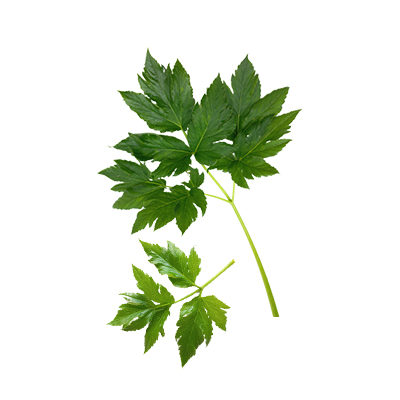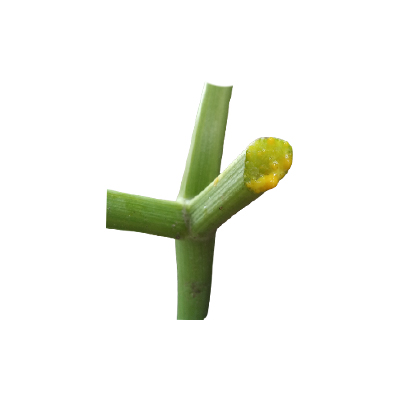Ashitaba
Angelica keiskei (Miq.) Koidz.
Apiaceae
Location in our garden
Principal
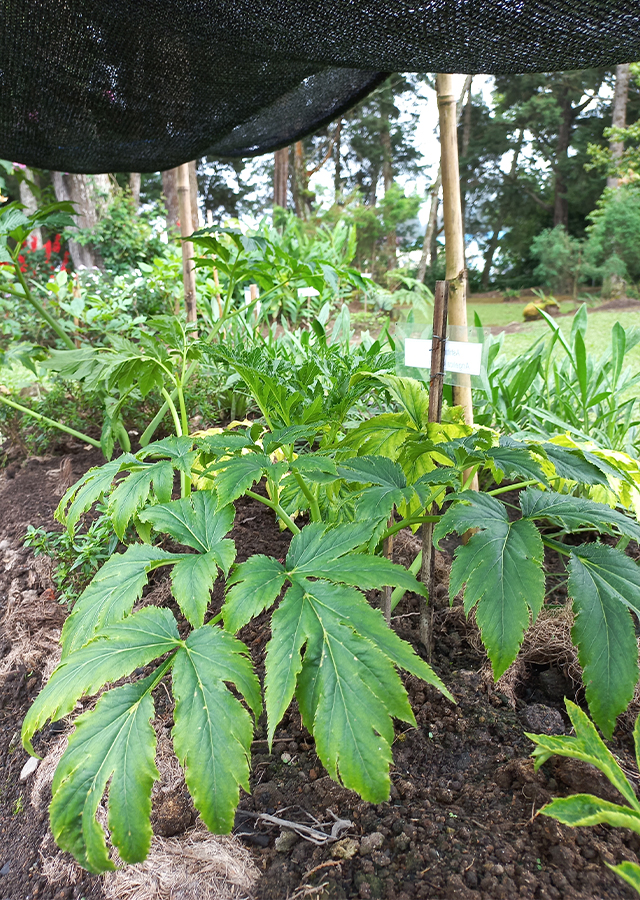
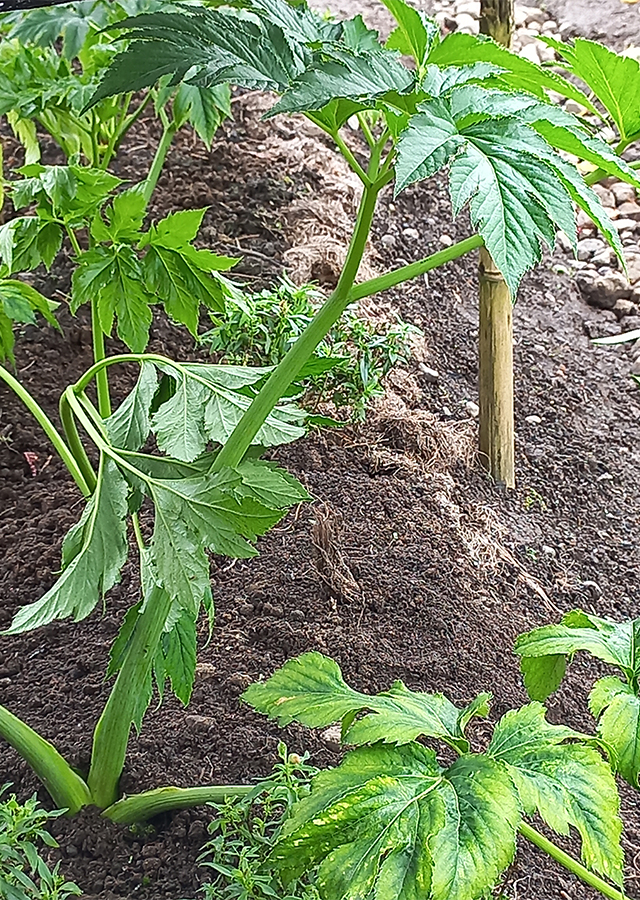
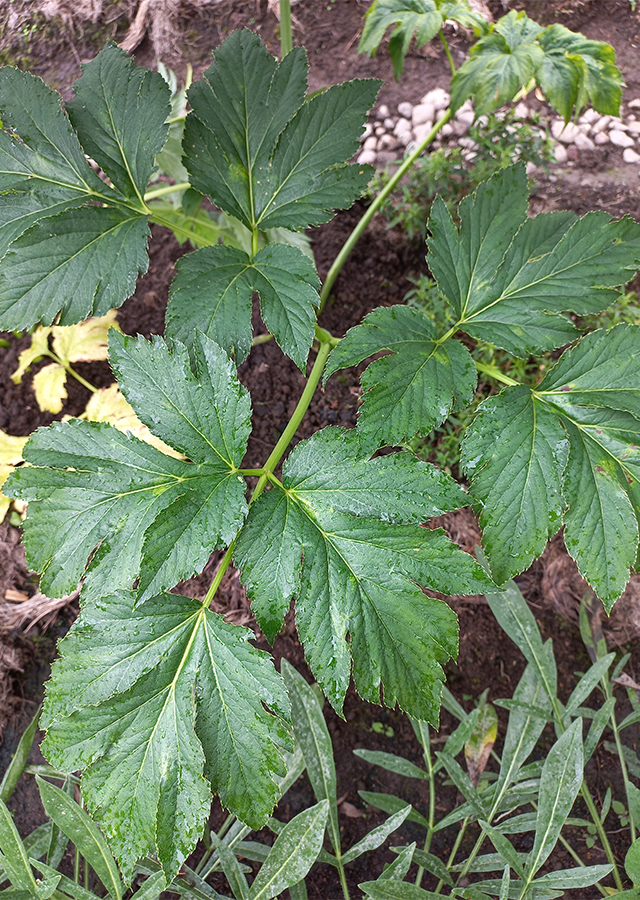
Synonym
Angelica keiskei f. foliosa Konta & S.Matsumoto
Angelica utilis Makino ex Y.Yabe
Archangelica keiskei Miq.
Habitus
Herbaceous. A herbaceous, biennial to perennial plant with a stout stem 80 - 120 cm tall
Part Used
Leaves
Roots
Sap
Stem
The Whole Plant
Growing Requirements
Full Sunshine
Need Shade
Habitat
Coastal
Terrestrial
Overview
Native to Japan, where it is found on the Pacific Coast. Angelica derives from Latin for angel. Keiskei derives from Ito Keisuke, the 19th century Japanese botanist, also referred to as the father of modern Japanese botany. Ashitaba derives from the Japanese words ashita (tomorrow) and ba (leaf), which relates to the plant's ability to regenerate new leaves after taking cuttings. The plant has long been used in Japan as a food that is a healthy addition to the diet and also as a medicine. Recent research (up to 2015) has confirmed many of the traditional uses of this plant and it is currently widely available over the Internet as a medicine, food supplement and as seeds for growing the plant.
Vernacular Names
Tong kuy (Chinese).
Agroecology
Ashitaba occurs on sandy soil and damp habitats by the sea coast. This species grows best in a deep moist fertile soil, but well-drained soil in dappled shade or full sun. In Indonesia, this species grow best in areas with cool climates with an altitude above 500 m above sea level.
Morphology
- Roots - fibrous, young roots are yellowish white to light brown and become dark brown when mature. The rhizome is thick and short, with few elongated roots.
- Stems - soft, watery, glabrous, round, segmented and grooved, green, grows upright, will produce yellow sap when cut.
- Leaves - green, glossy leaves have pointed lobes and a toothed leaf margin. Crushed leaves have a ginseng-like aroma.
- Flowers - the inflorescence is a compound umbel composed of small, white flowers arranged in a radiating pattern contained within a single plane.
- Fruits - schizocarpium consists of 2 mericarpium which separate when ripe, oval, glabrous, short dorsal ribs and rather thick, winged lateral ribs.
- Seeds - oval, pointed at both ends, green and when ripe will turn brown, seed coat fused with pericarp, oily endosperm.
Cultivation
Propagated by seeds - best sown in a cold frame as soon as it is ripe since the seed only has a short viability. It requires light for germination. The seed can also be sow in situ as soon as it is ripe.
Chemical Constituents
Furocoumarins, psoralen, bergapten, xanthotoxin, angelicin, 1-cerotol, daucosterol, stigmasterol, quercetin-3-O-β-D-glucopyranside, luteolin-7-rhamno-glucoside, luteolin-7-O-α-D-glucpyranoside, steviol-l3-O-β-glucopyranoside 19-β-glucopyranosyl ester octaacetate, chalcone compound (2′,4′,4-trihydroxy-3′-[2-hydroxy-7-methyl-3-methylene-6-octaenyl] chalcone, 2′,4′,4-trihydroxy-3′-geranylchalcone, 2′,4′,4-trihydroxy-3′-[6-hydroxy-3,7-dimethyl-2,7-octadienyl]chalcone, 2 ,4-dihydroxy-4′-methoxy-3′-[2-hydroperoxy-3-methyl-3-butenyl]chalcone, 2′,4-dihydroxy-4′-methoxy-3′-geranylchalcone, and 2′, 4-dihydroxy-4′-methoxy-3′-[3-methyl-3-butenyl]chalcone), chalcones 4-hydroxyderricin, xanthoangelol.
Traditional Medicinal Uses
- Angelica keiskei is a popular herbal medicine in Japan and China, that is becoming more widely known in the West. It is said to have a range of health benefits. It is said to improve the body’s natural immunity, and to treat a range of ailments including gastro-intestinal tract disorders; acute and chronic gastritis; stomach cancer; duodenal ulcers; gastric atonia; chronic enteritis; carcinomas and melanomas; chronic hepatitis, diabetes and insulin-dependent diabetes; hyperglycaemia; asthma; common colds; high blood pressure; anaemia; chronic fatigue syndrome; infertility, shoulder stiffness; neurosis; haemorrhoids; to relieve the symptoms of the menopause and PMS. It is also said to retard the ageing of the skin and improve its complexion.
- The plant is antidiabetic, antiinflammatory, antioxidant, antitumor, blood purifier, diuretic and laxative.They are said to have antitumour activity, to be antioxidant, diuretc, laxative and a good general aid for the metabolism. They have been shown to modulate lipid metabolism and to help prevent adiposity.
Part Used
Reference Sources
- Fern, Ken. Useful Tropical Plants. (2021). Angelica keiskei. http://temperate.theferns.info/plant/Angelica+keiskei. 14-01-22.
- Flora & Fauna Web. Angelica keiskei. https://www.nparks.gov.sg/florafaunaweb/flora/6/3/6399. 14-01-22.
- StuartXchange. Philippines Medicinal Plant. (2019). Angelica keiskei. http://www.stuartxchange.org/Ashitaba. 14-01-22.



